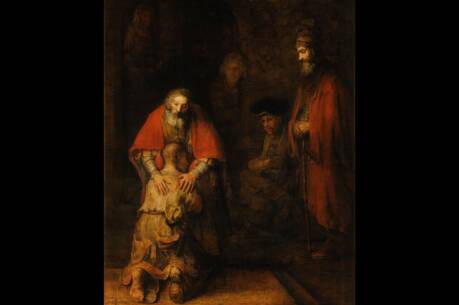Our Savior, Christ the Lord
The feast of Christmas is so rich that we need three sets of readings to throw light on its meaning. Even then we only scratch the surface. At midnight we are struck by the contrast between a child in a manger wrapped in swaddling clothes and the Wonder-Counselor of whom Isaiah speaks. He who was the Prince of Peace was born into a people living under the heel of Roman occupation. The glorious news of the birth of the God-Hero is announced to simple shepherds, not the kind of people to whom those in authority would listen.
Down through the centuries, this contrast has inspired numerous Christmas cards. But has it inspired us? Have we come to realize how much God loves those who are weak and vulnerable? Or are we too busy with the tasks to be accomplished, the celebrations to be enjoyed, the power to be achieved? Have we forgotten that we too are weak and vulnerable? Midnight Mass is a time for us to pause and consider the manner in which God chose to save us.
A sense of wonder appears in the readings for the Mass at dawn. Isaiah’s people need to be assured that their salvation has dawned. A certain hesitancy prevails, like the light of day shyly creeping up over the horizon. The shepherds too are amazed. But why? This was certainly not the first newborn that they had seen. But this child’s birth had been announced by angels. And if the announcement was accurate—“an infant wrapped in swaddling clothes”—then perhaps the rest of the announcement was true as well: “A savior has been born.”
This scene has also been captured in Christmas cards. It too challenges us. Have we been able to hold onto the wonder that we see in the eyes of children? Or has the harshness of life squelched our passion for living? Do we see each sunrise as a promise of new life?
The readings for the third Mass on Christmas are for grown-ups. There are no Christmas cards here. Instead, we are invited to look deeply into the identity of this child, who is more than a child. He is the Word of God, the very self-expression of God. He was present at creation; he is actually the one through whom all things were made. This description is not a departure from the picture of the helpless child in the manger. In fact, traces of this can be seen in the very first reading for Mass at midnight: “Wonder-Counselor, God-Hero, Father-Forever, Prince of Peace.” Clearly, the Christmas readings begin and end with this theological portrayal. It serves as a frame around the Bethlehem picture, keeping us mindful of who this child really is and why he was born—our Savior, Christ the Lord!
This article also appeared in print, under the headline “Our Savior, Christ the Lord,” in the December 15, 2003, issue.







